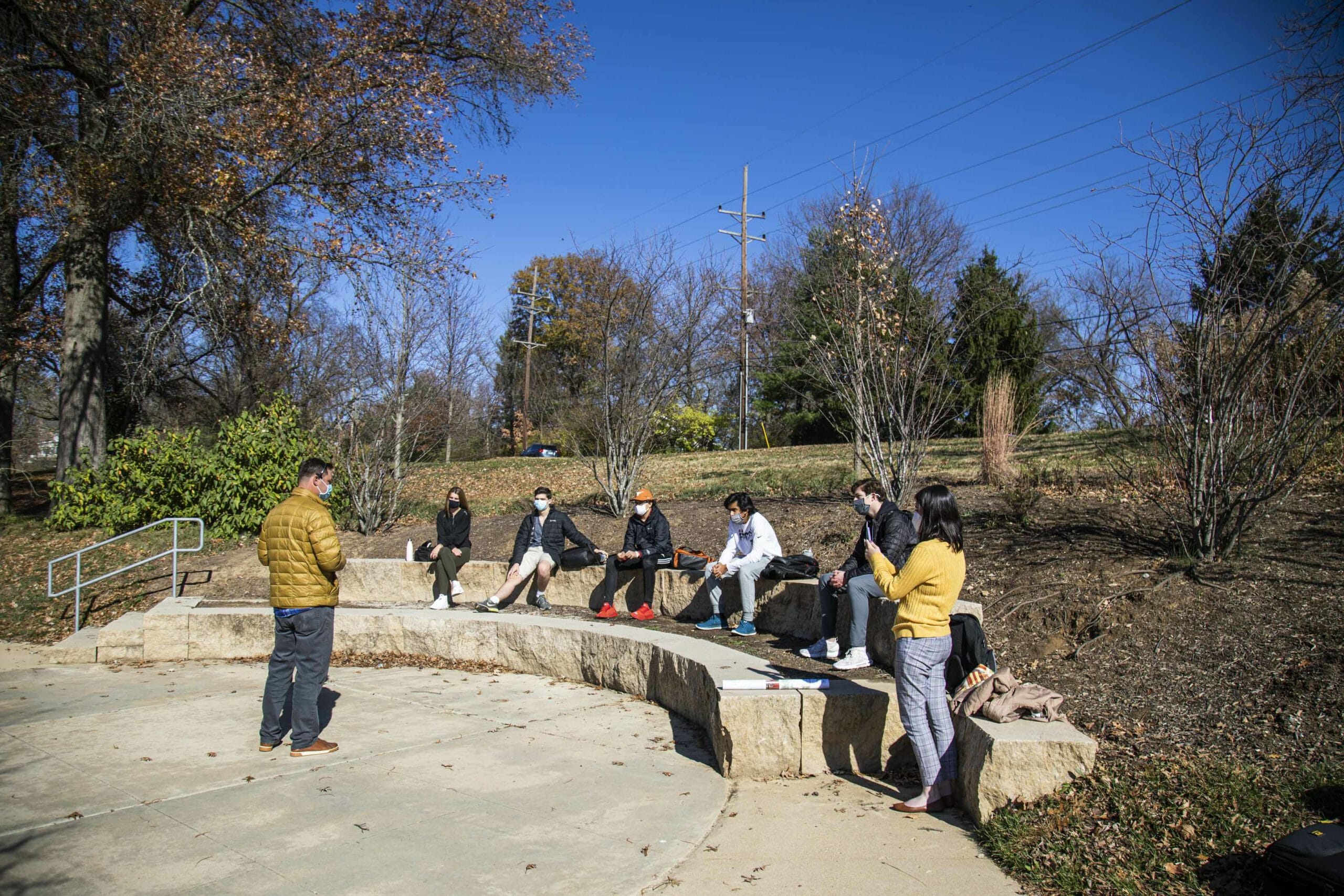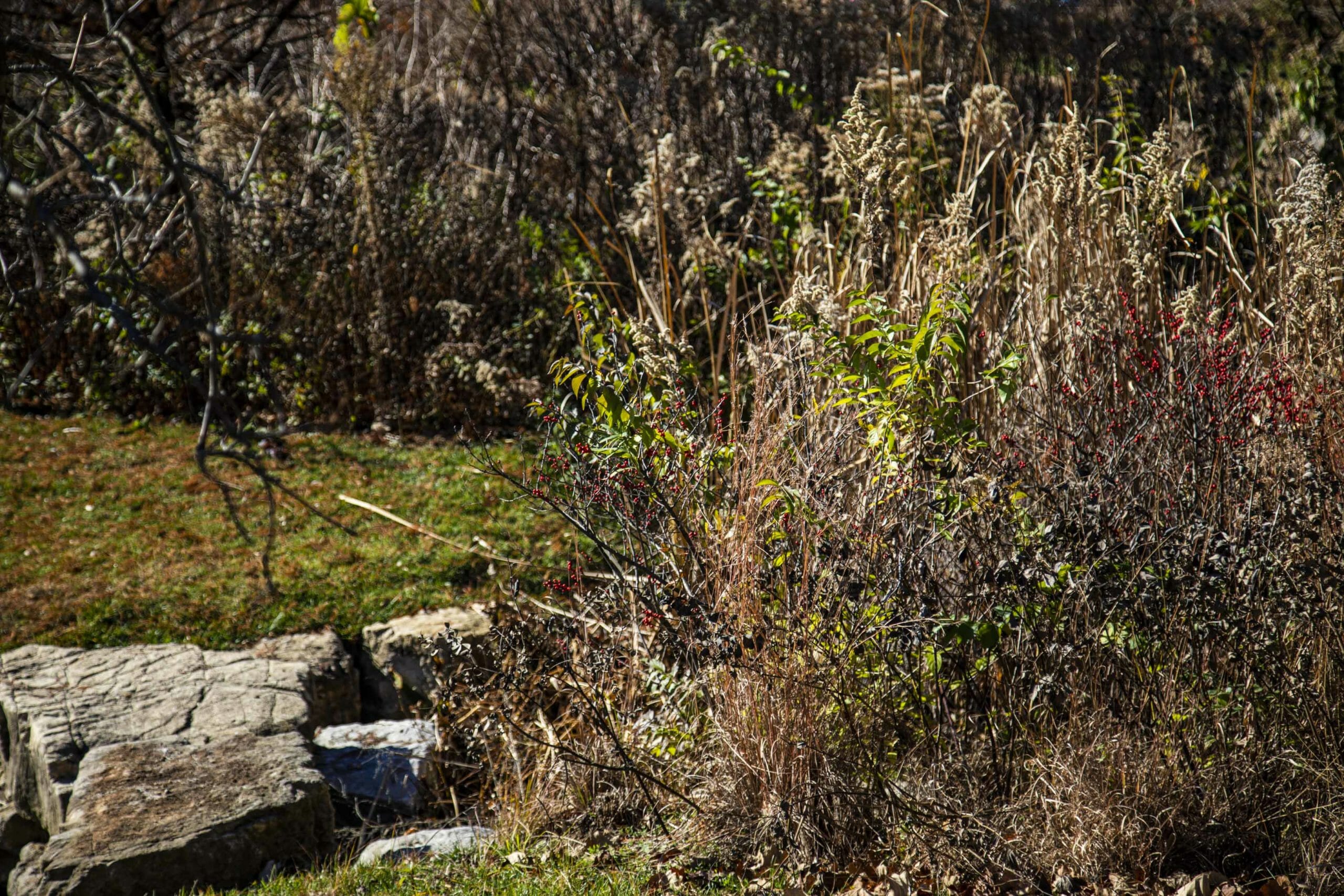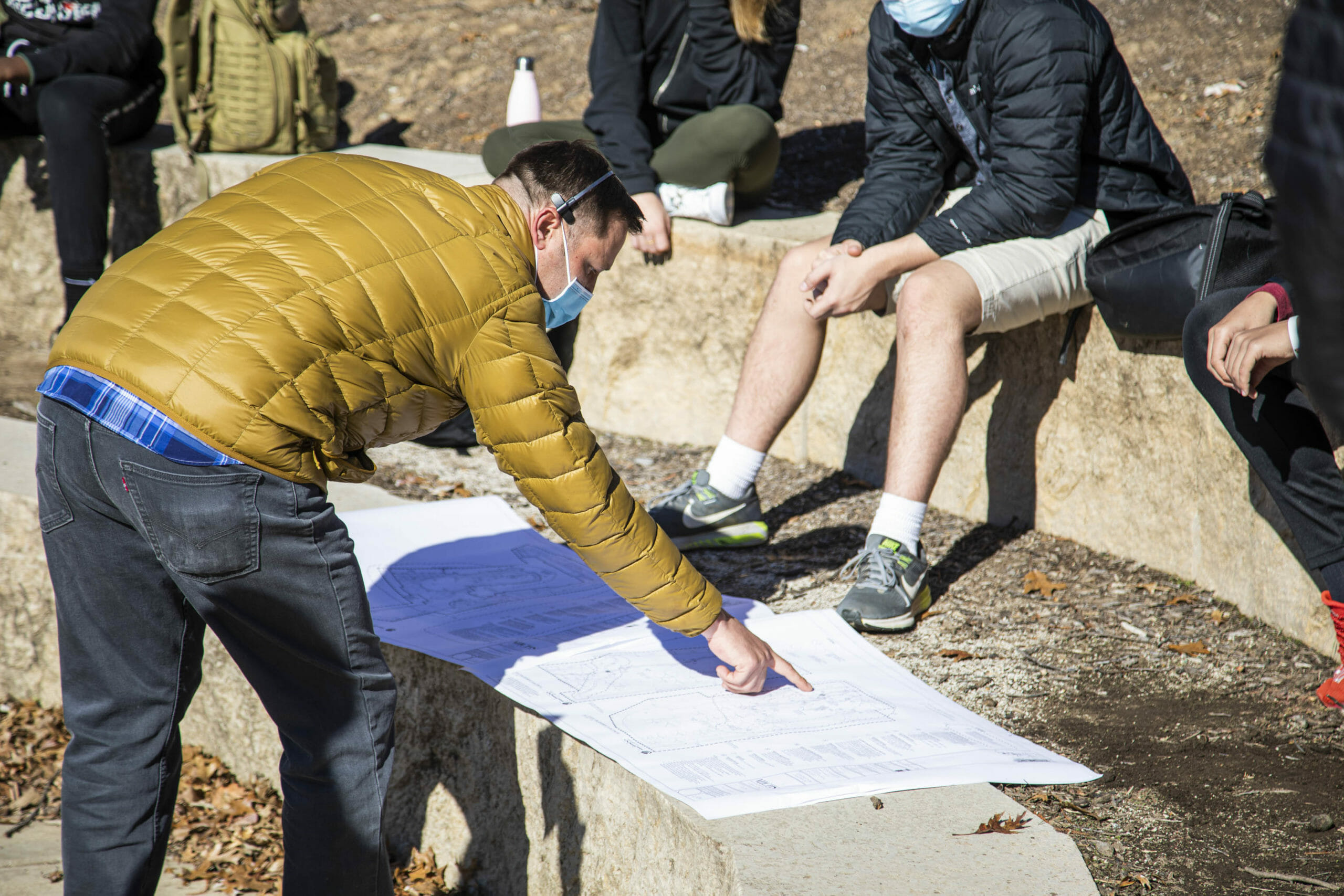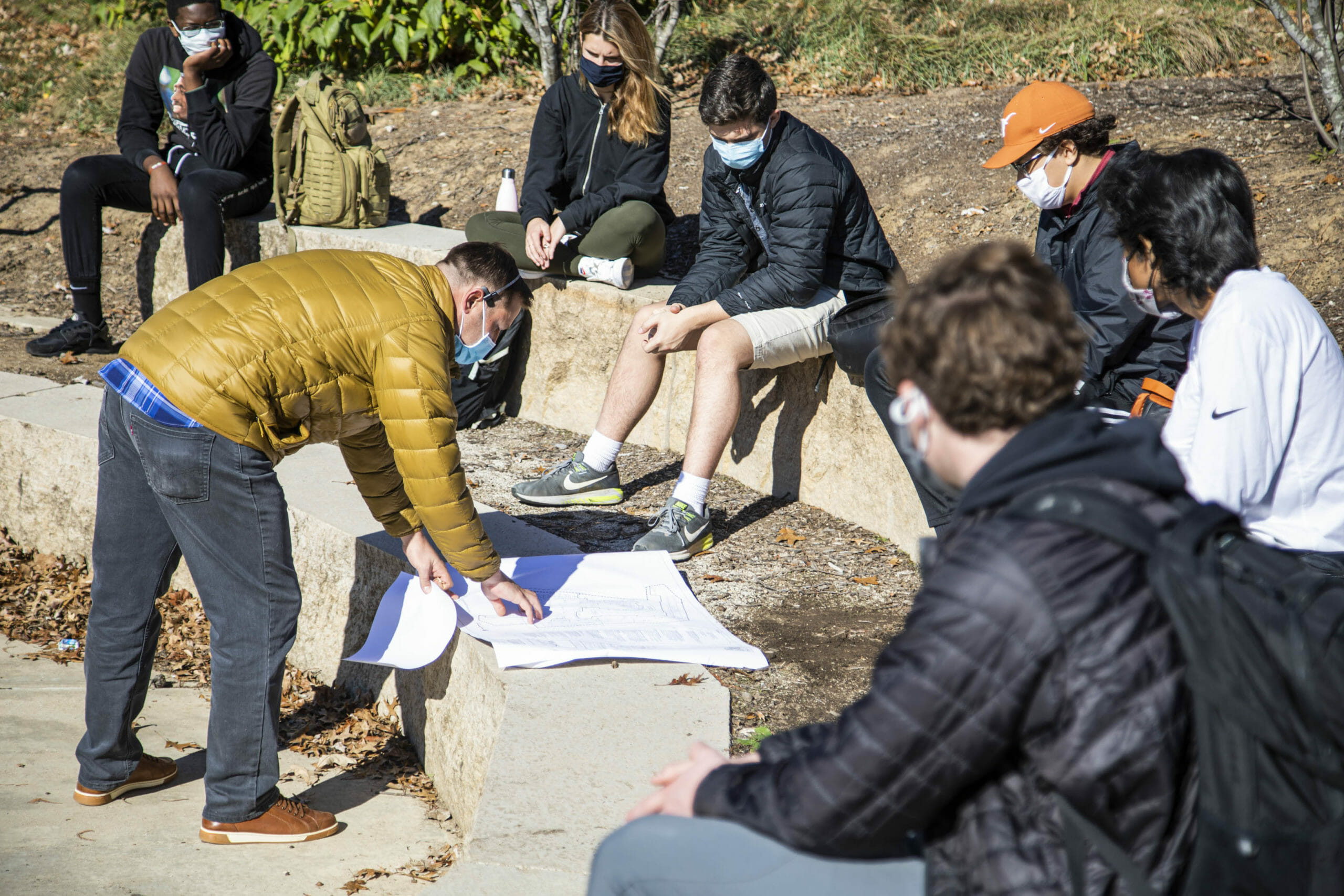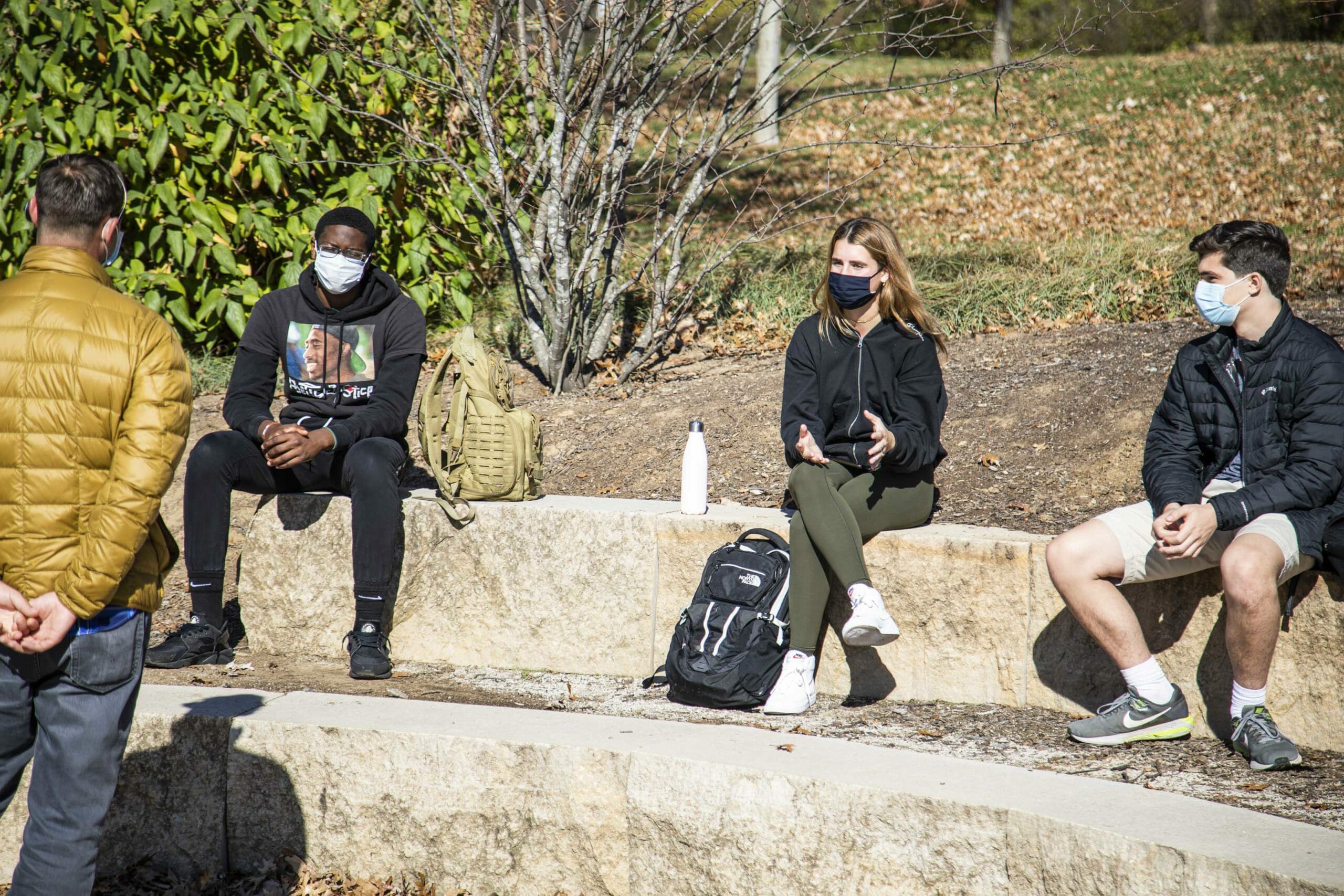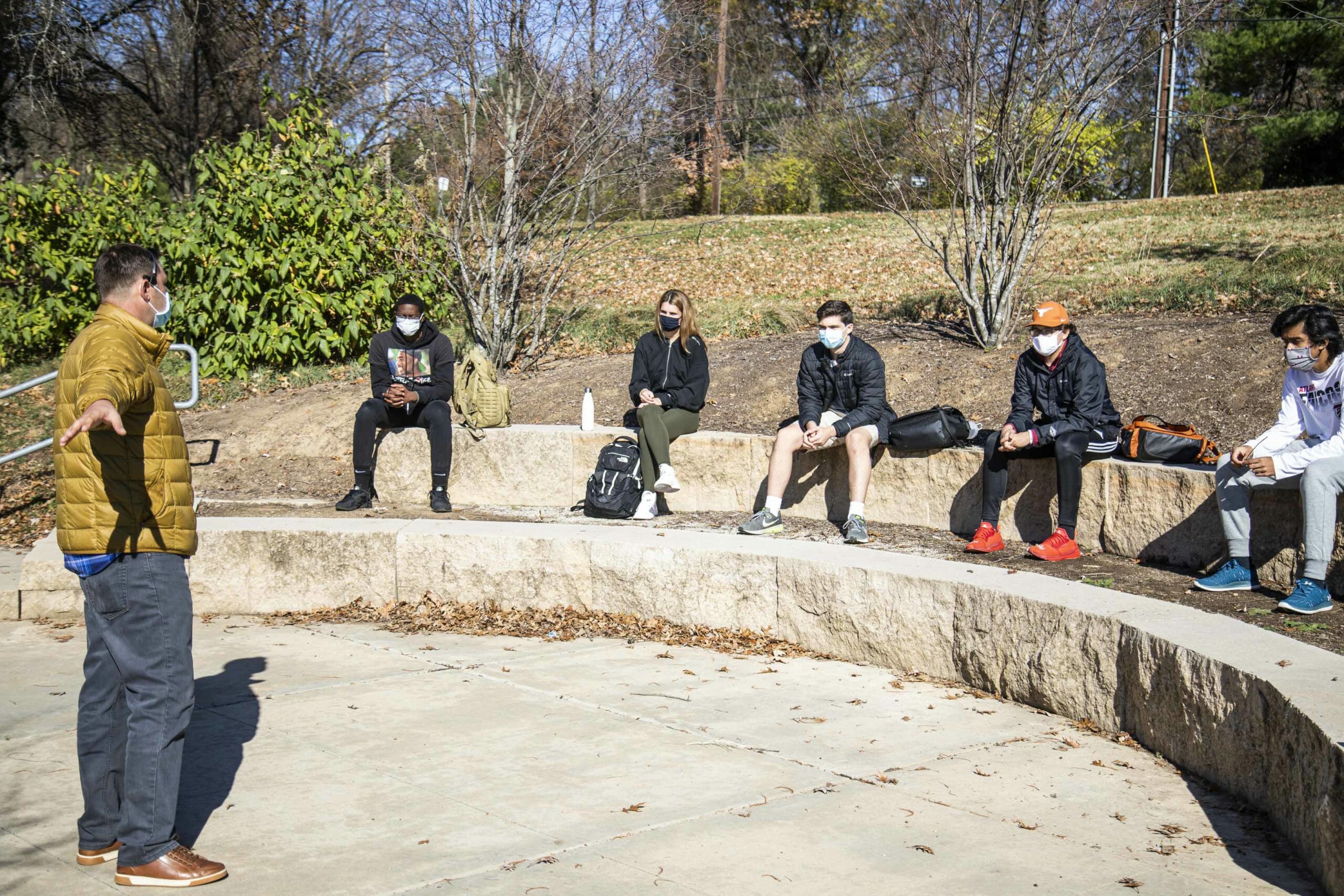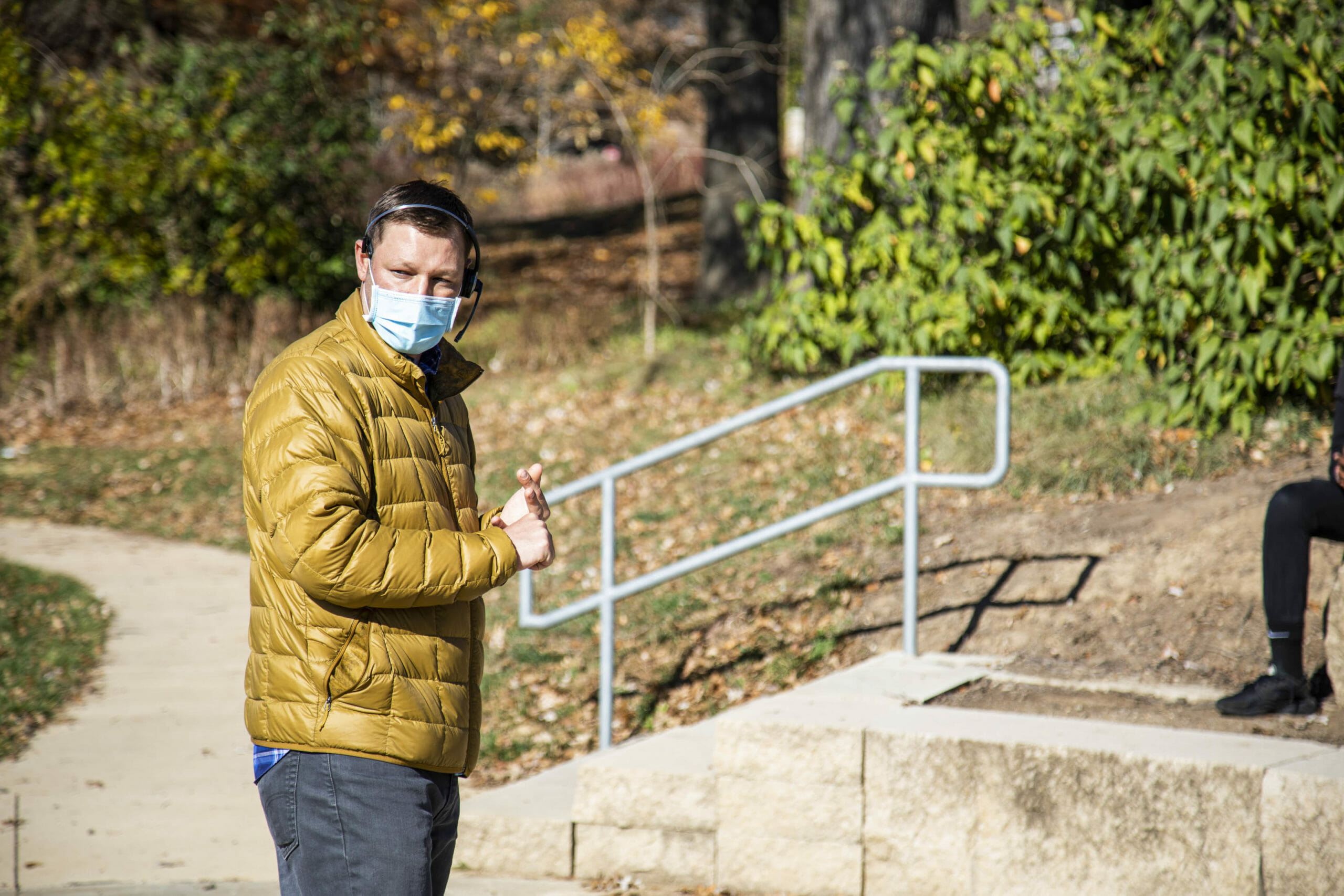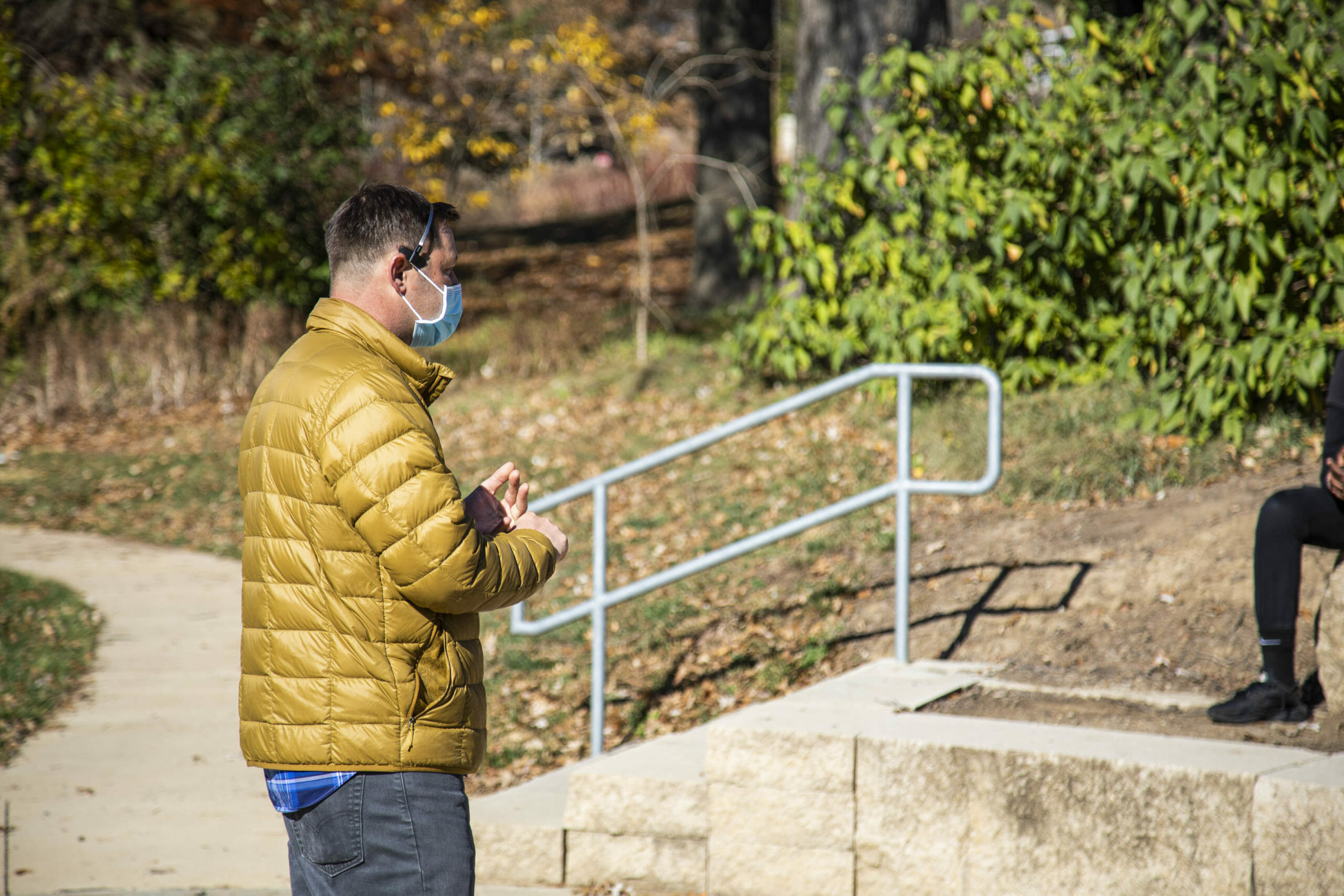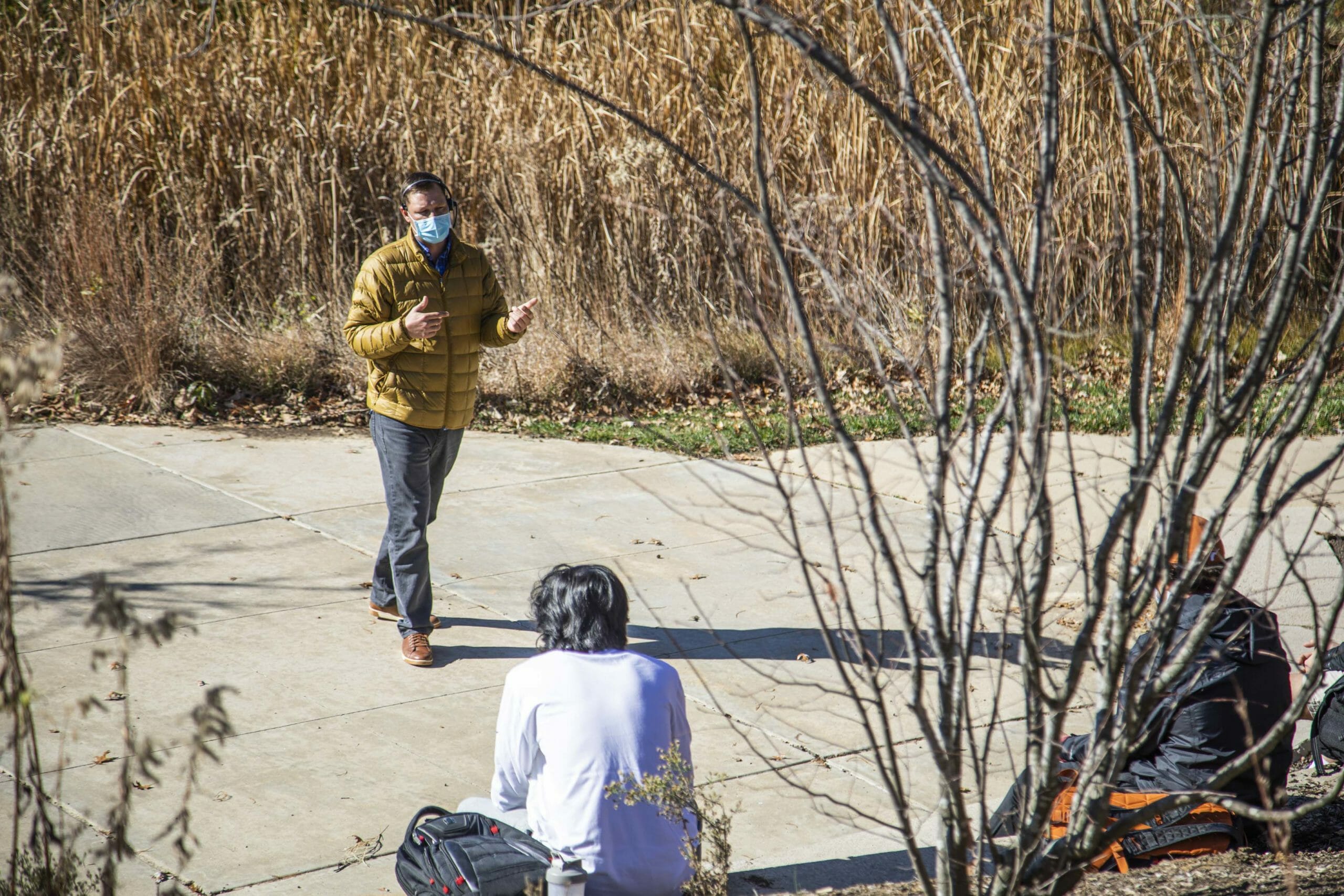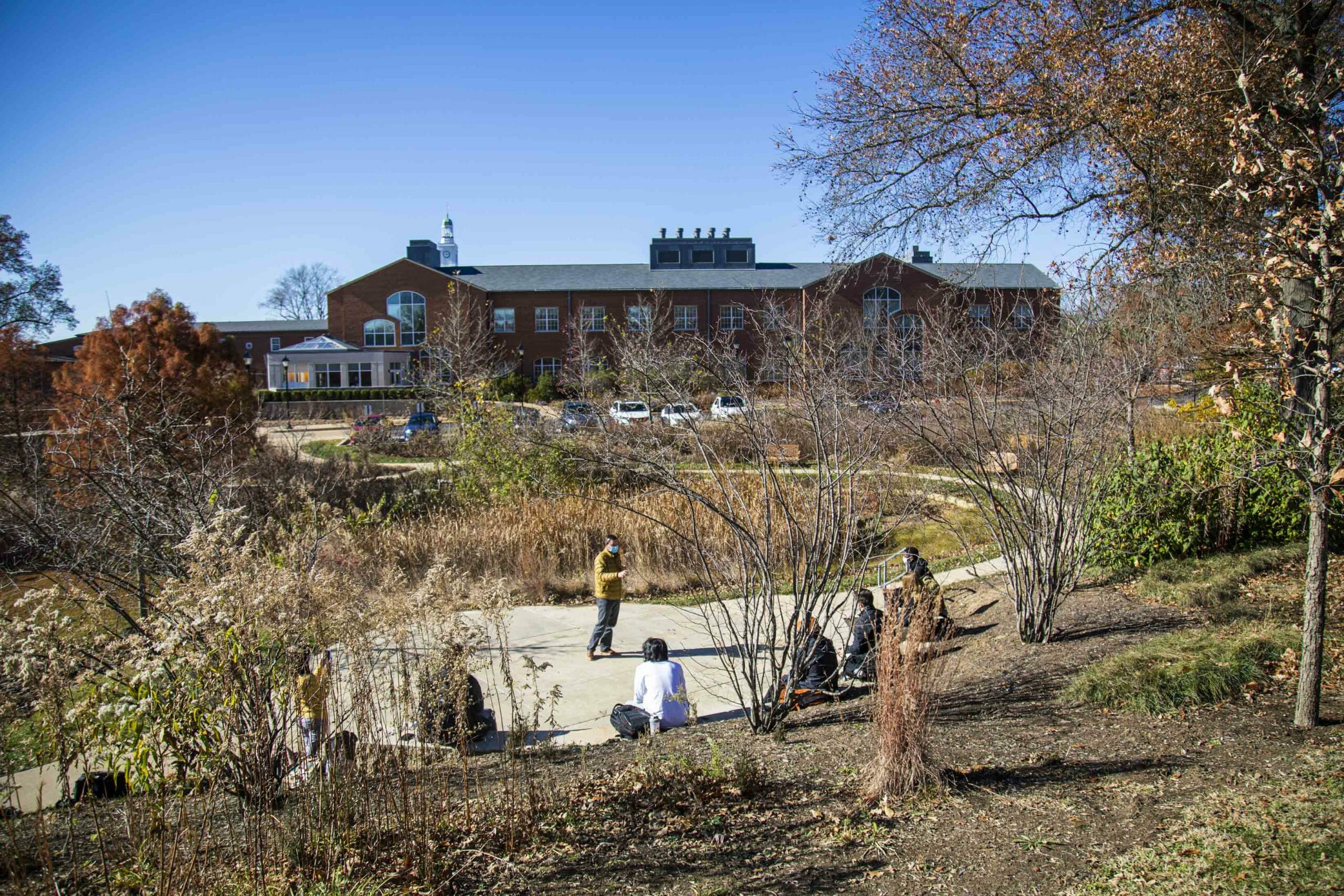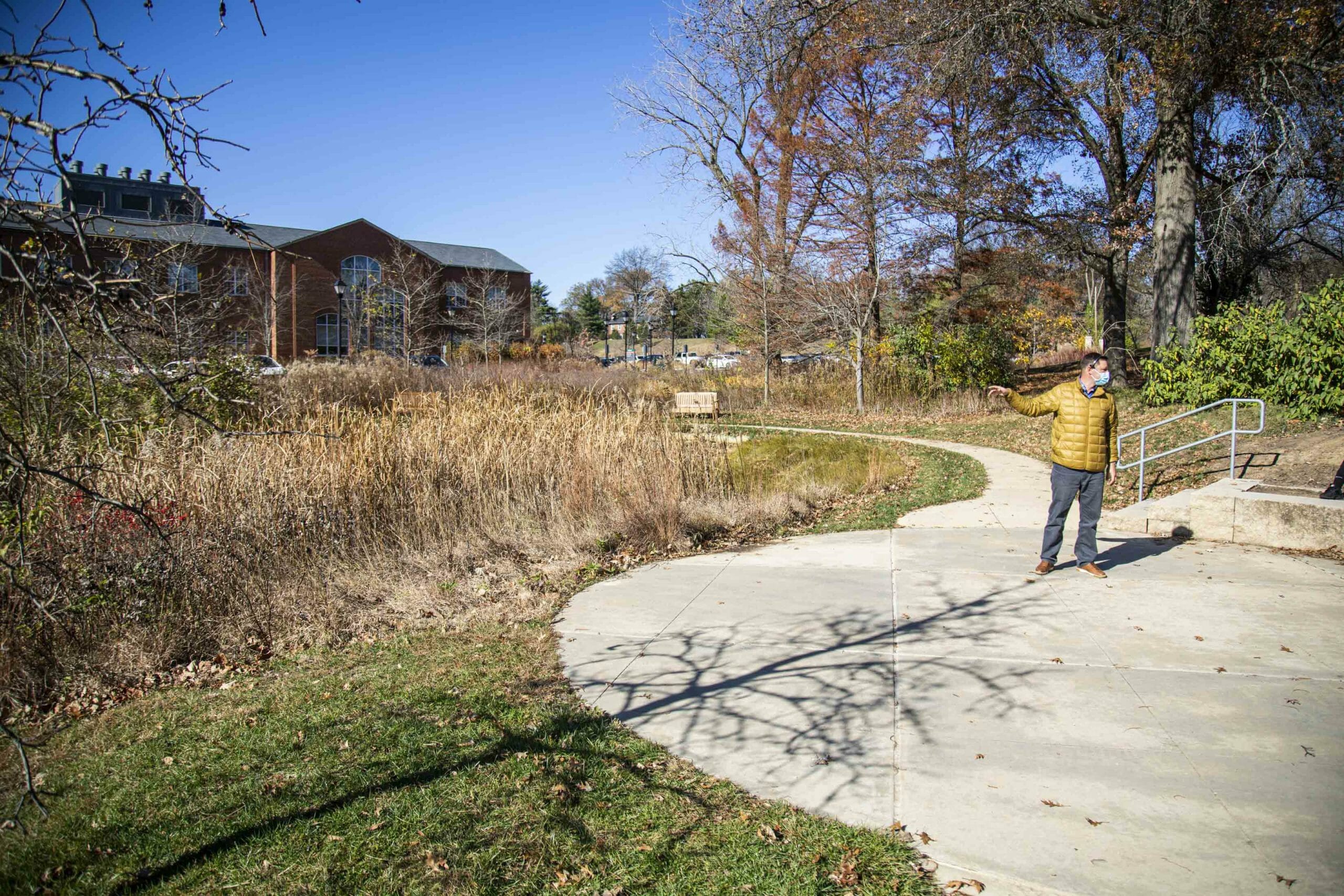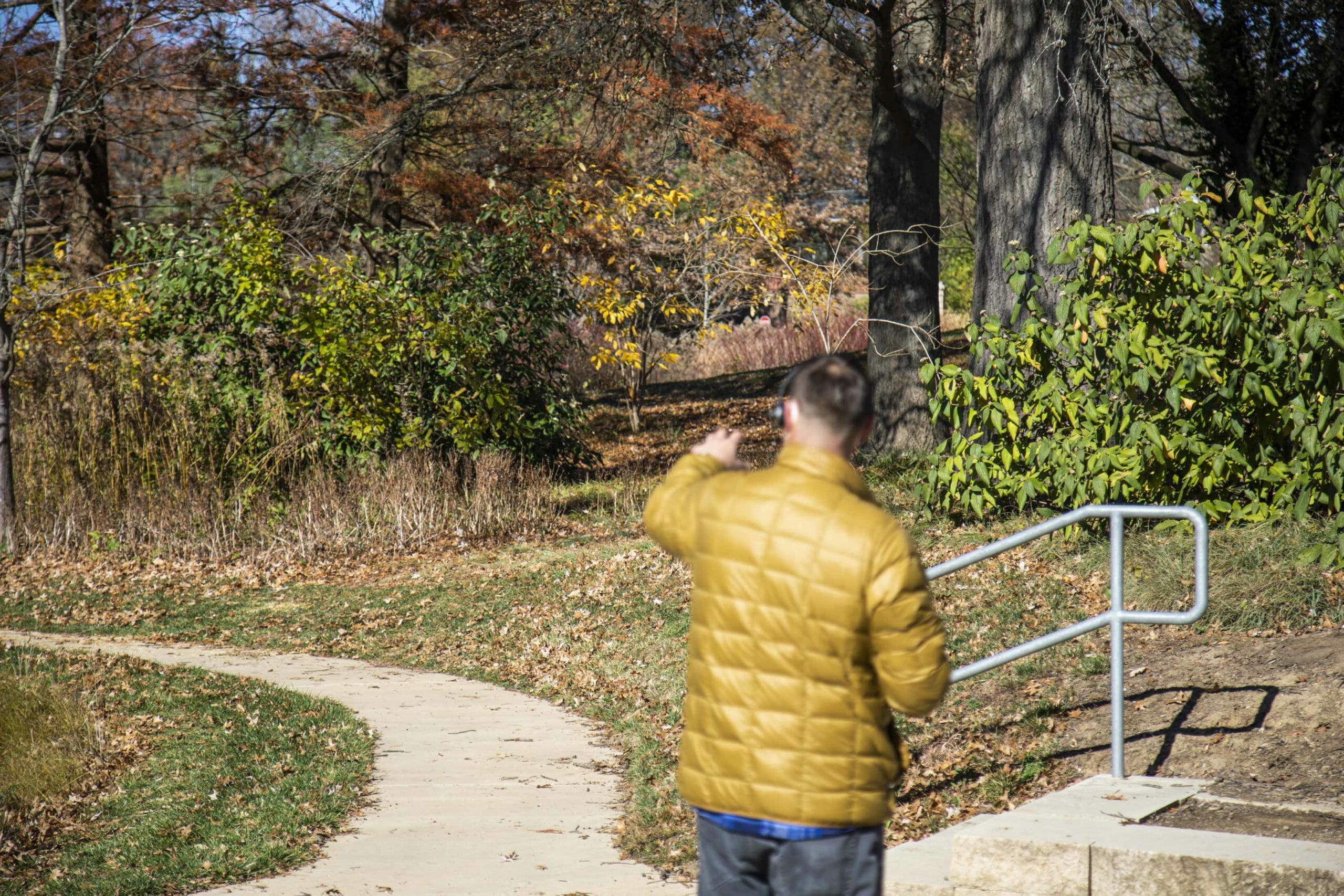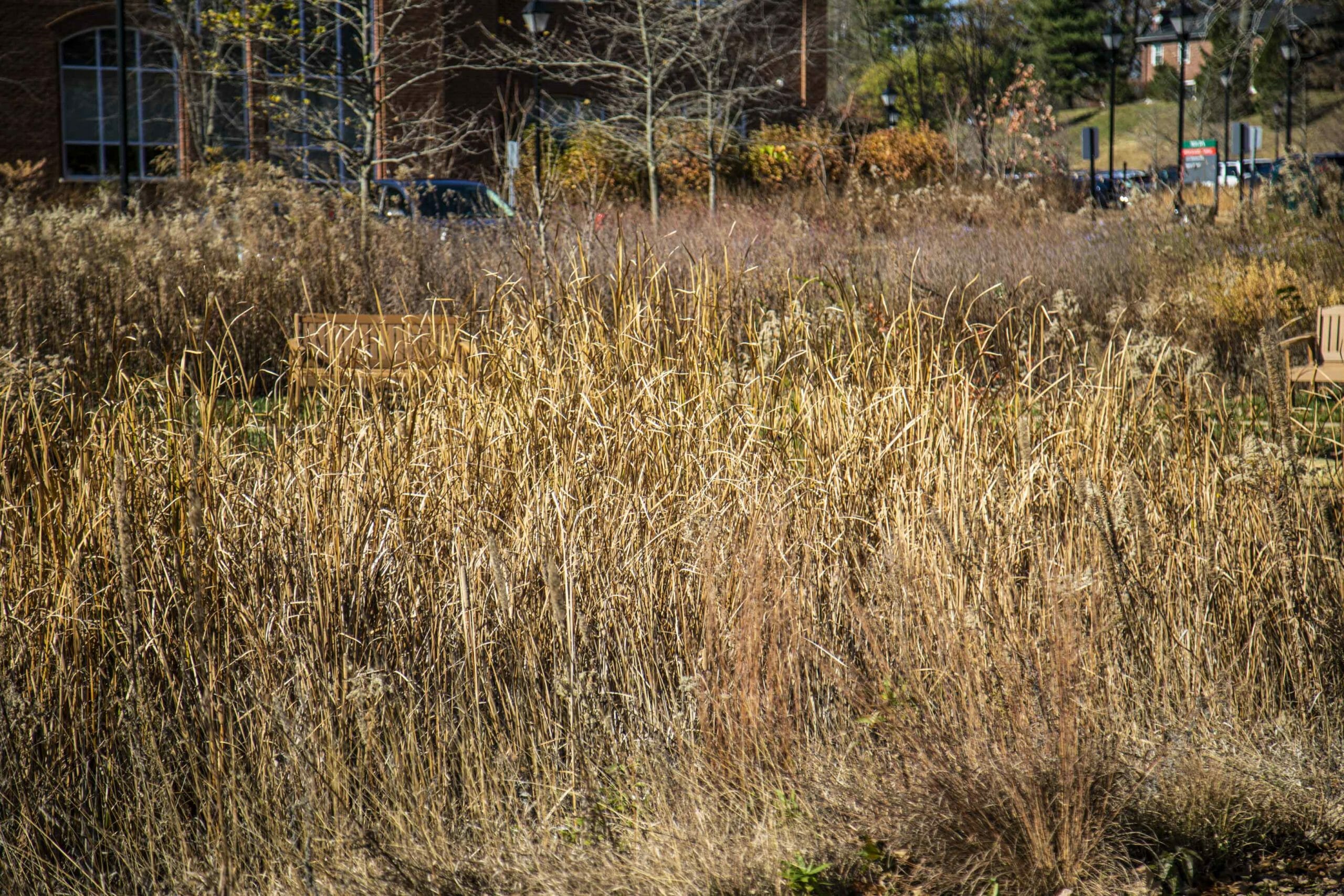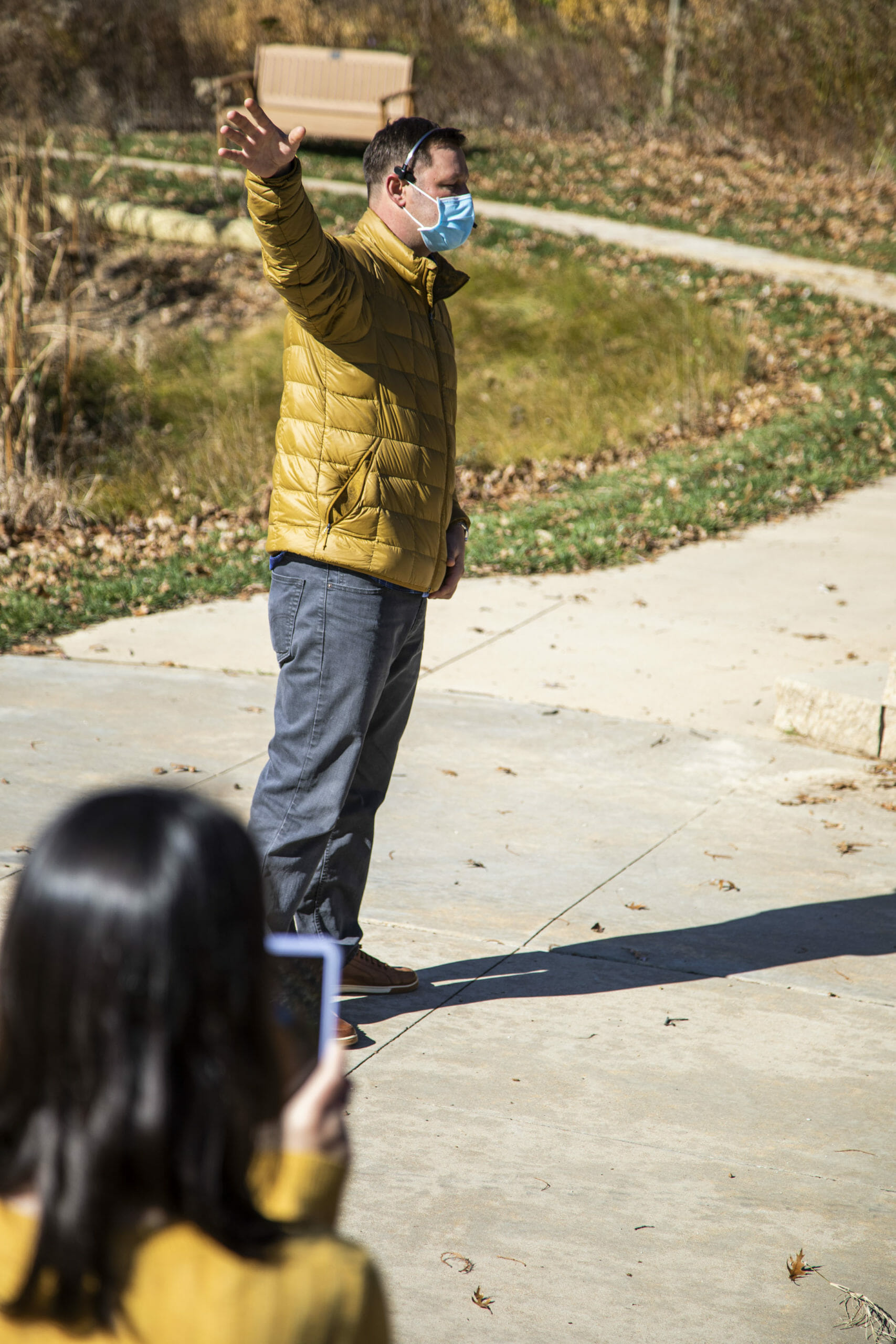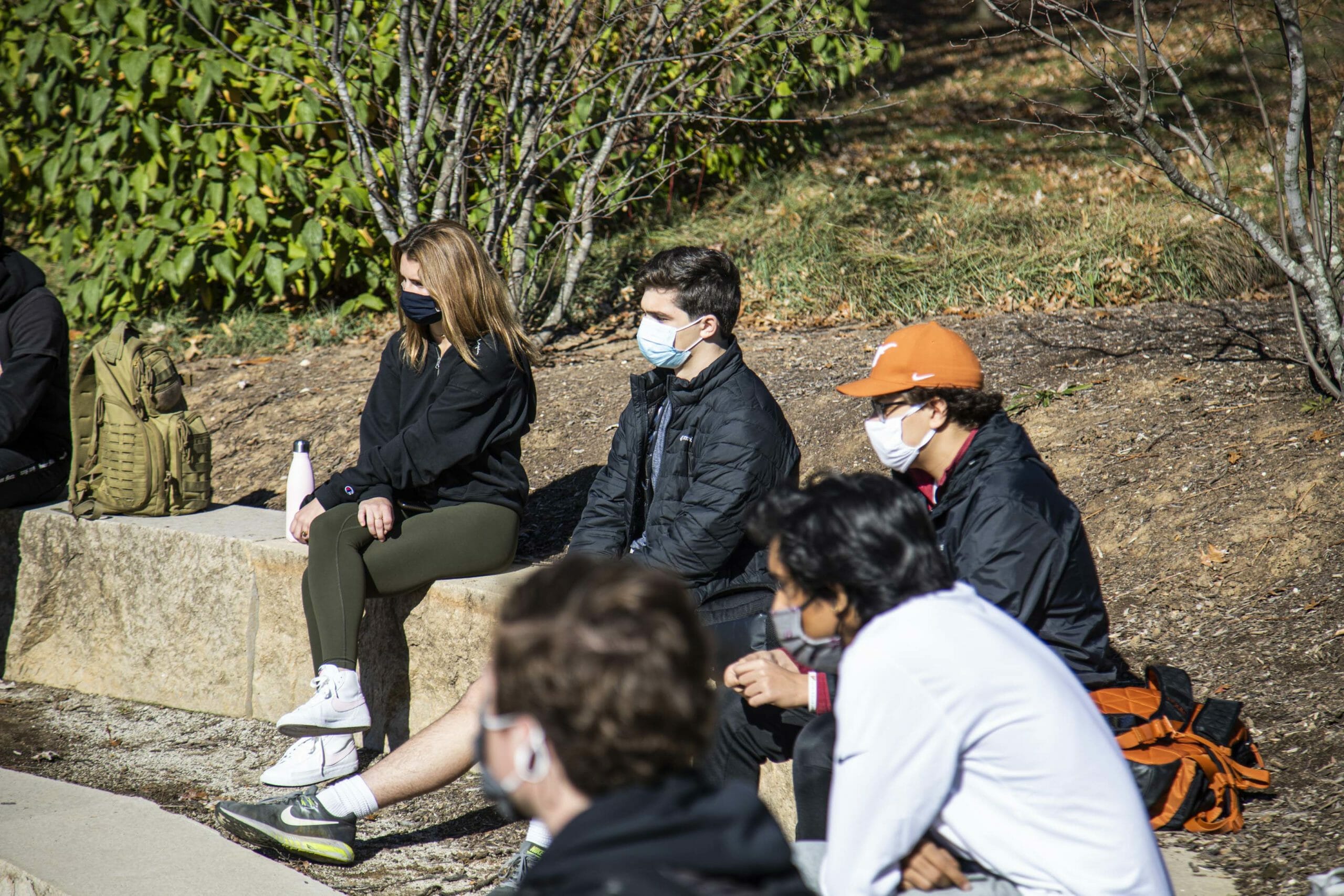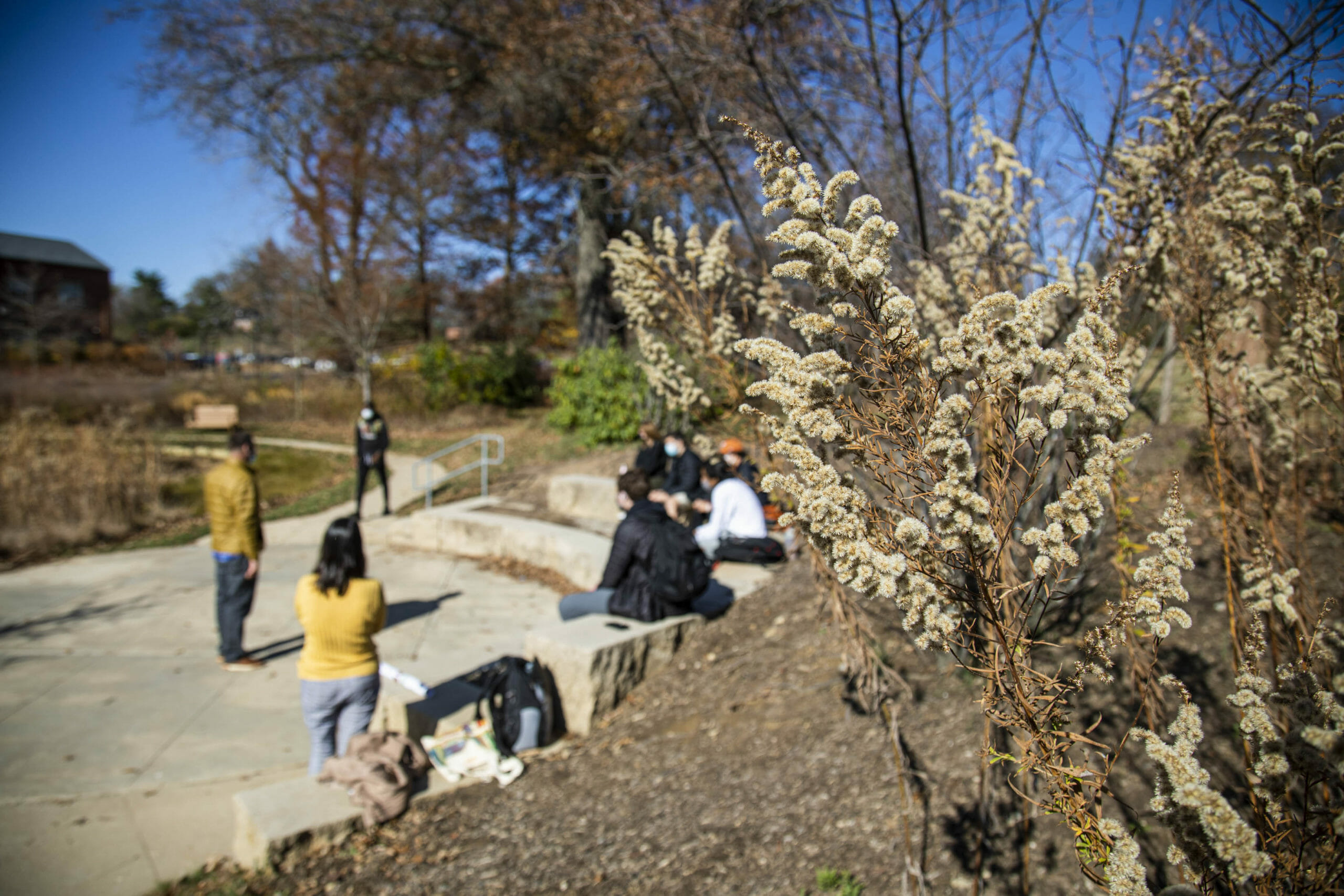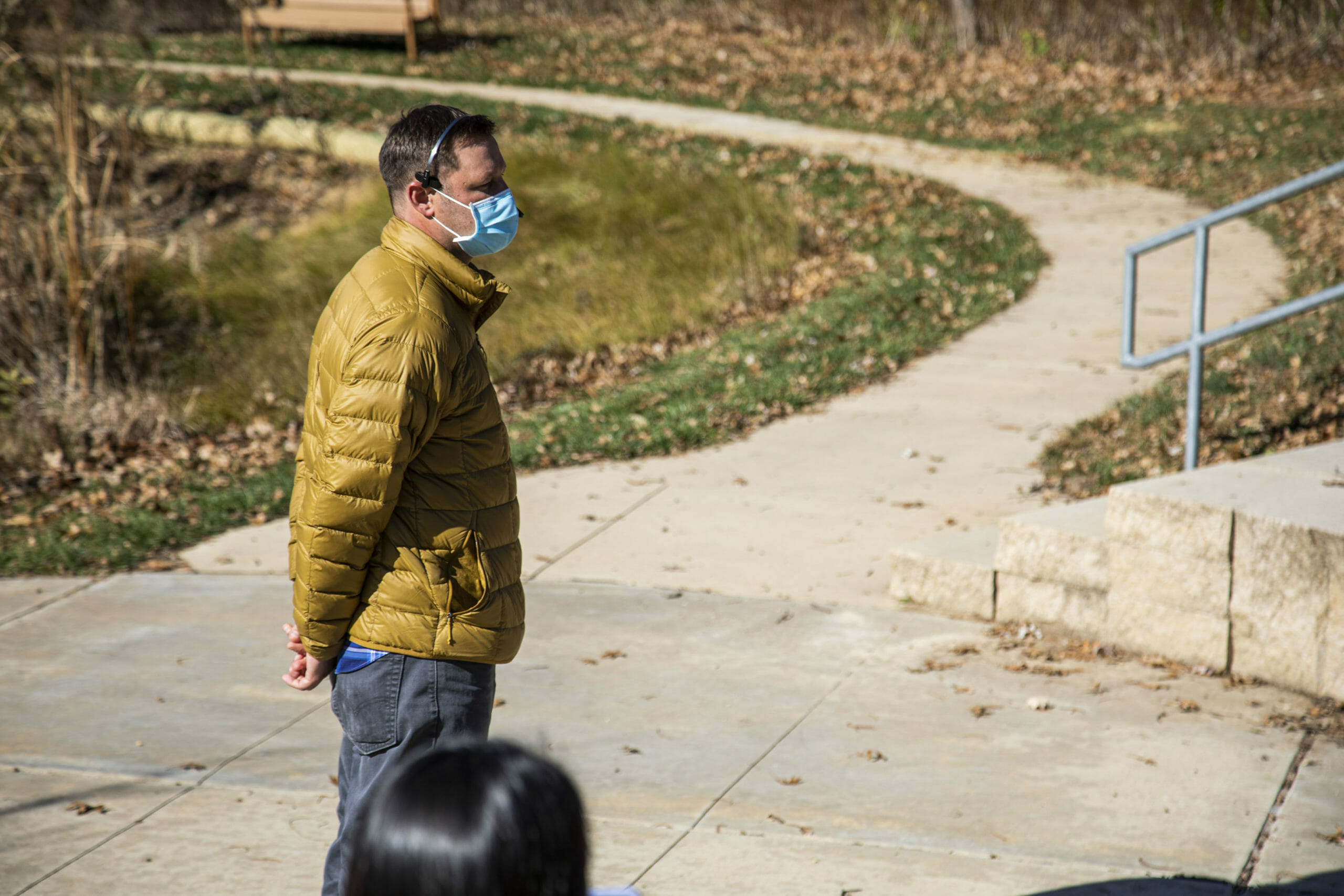Landscape Architect Felipe DeNarvaez visited with 11th graders both in-person and online for Ms. Galluppi’s Environmental Science class to discuss the decisions that were made when developing the landscape plan for the McDonnell STEM building.
When the new STEM building was constructed, DeNarvaez had the challenging task of developing a landscape that was both functional and beautiful—although that beauty may not be the typical short-grass lawns and manicured bushes that are common around most homes and businesses.
“Some people may look at this piece of landscape and think of it as messy,” DeNarvaez said, referring to the native Missouri plants chosen for the area in front of the STEM building. “People are used to seeing clean and organized landscaping.”
But those native plants have their purpose: to stop water runoff from quickly flowing over the land. Slowing down water runoff increases retention, which promotes a healthy ecosystem. The water ultimately returns to the water table.
“I thought it was really interesting that they had to figure out a way to include the water from other neighborhoods and areas around the school,” said Joshua Borja ’22. “The plants out front filter water from different areas around the campus and they help collect water and drain it into the river and streams, directly from our school. I think it’s pretty cool how something so simple—like some plants in front of the school—can have a big impact on the community we live in.”
Some of the water is even diverted for more practical uses such as flushing toilets. Two tanks in the STEM building capture runoff water from the structure and surrounding area and recycle that water to be used inside, which is one of the many reasons the building is LEED Certified.
Besides gaining valuable knowledge about their campus, a few students expressed interest in DeNarvaez’s career after the lecture.
“Gaining more insight on what procedure a landscape architect goes through during the design process was very interesting,” said John Niedringhaus ’22. “It’s something that I am interested in further learning about.”
Felipe wore a headset while Ms. Galluppi streamed the lecture from her phone, which made it possible for him to speak directly to students who were distance learning as well as hear any questions from those students. The speaker also pointed out an important design feature of MICDS’ campus – the many outdoor learning spaces that are especially useful during this pandemic.
«The naturalized areas on campus are providing plenty of outdoor classroom space for science, math, arts, and humanities classes as well as places for students and faculty to have isolated outdoor mask breaks in a pleasant setting during this Pandemic,» commented Dr. Bob Shaw, the JK-12 Science Department Chair.
